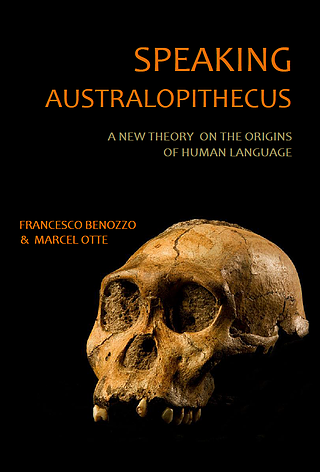Speaking Australopithecus A New Theory on the Origins of Human language

di/a cura di: Benozzo Francesco
This book, written with the archaeolgist Marcel Otte, argues for a much greater antiquity of human language than has usually been presumed in recent research (according to which it was born with Homo Sapiens at the end of Middle Paleolithic – 50.000 years ago – or at the most with some Neandertal, 200.000 years ago), providing linguistic and archaeological evidence for seeing the appearance of Australopithecus, between 4 and 3 million years ago, as the stage of our evolution when the emergence of an articulated language took place.
INDEX:
1. The dichotomy between primate calls and human speech
2. Chronological inadequacy of linguistics
3. Was there a capacity for language in Australopithecus?
4. First evidence: lithic-geolinguistic correlation
5. Second evidence: the millennial stability of languages
6. Third evidence: compositional syntax in animals
7. Fourth evidence: human words formation is illustrated by primates’ ‘linguistic’ response to stimuli
8. Why Australopithecus? Anatomy
9. Why Australopithecus? Habitat
10. Why Australopithecus? Tools
11. Why Australopithecus? Bone remains
12. Conclusions
References
Speaking Australopithecus A New Theory on the Origins of Human language